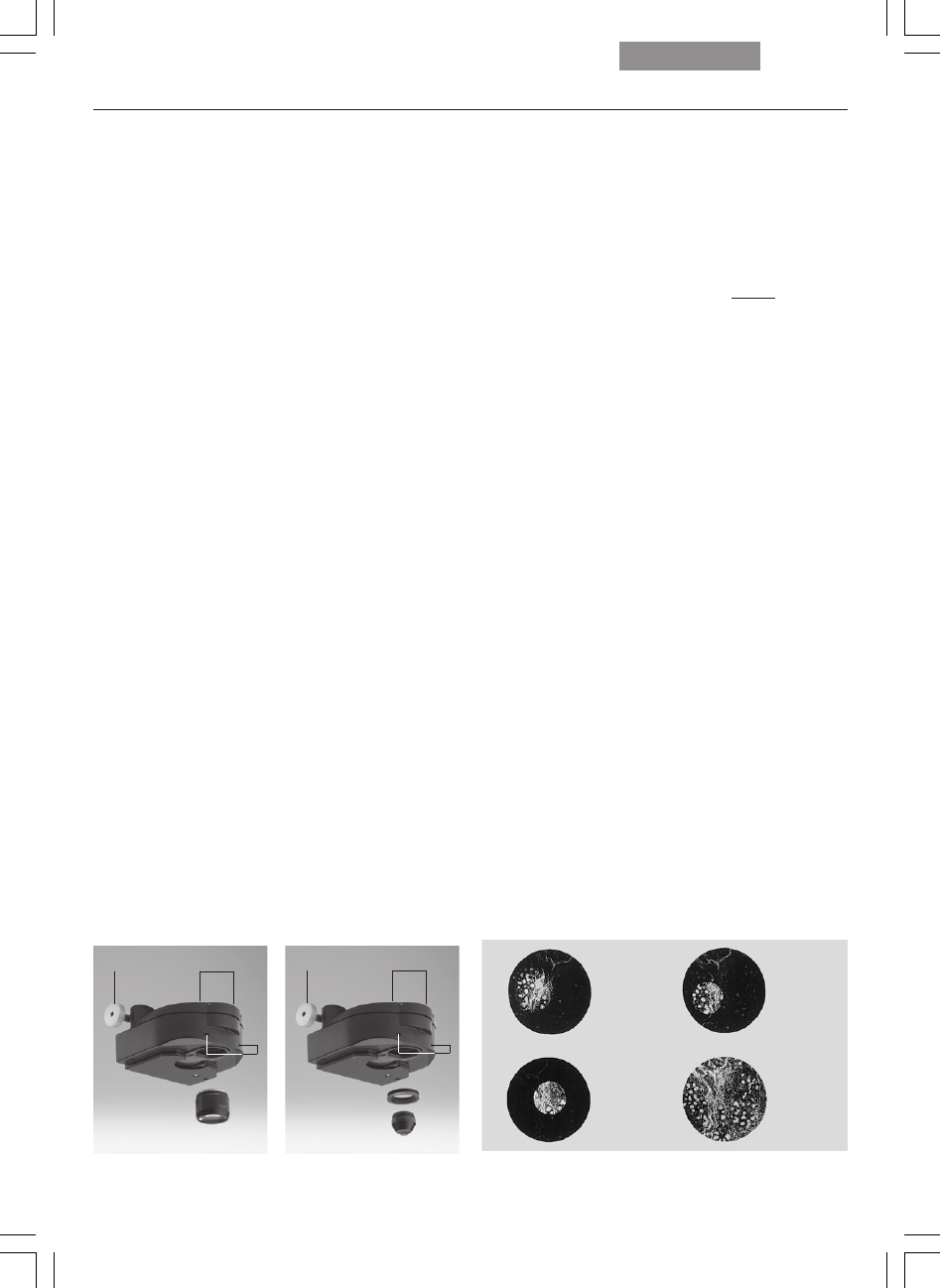
71
7. Start-up
field of view. The black edges of the image
should have the same distance to the outer
edge of the field of view on all sides. If not,
recenter the image with the centering screws.
Adjust the height of the condenser until the
edges are sharp. Now open the field dia-
phragm until the image fills the entire field of
view and the black edges have disappeared
completely (91.d).
• The last step is the adaptation of the contrast
settings. To improve the contrast, close the
aperture diaphragm – if you close it too far,
however, the resolution of the image details
will deteriorate.
To see the aperture diaphragm, remove an
eyepiece tube and look directly into the tube.
Your eye should be around 10 to 20 cm from
the tube. Change the size of the aperture dia-
phragm until its image is clearly visible in the
pupil of the objective.
• Set the aperture diaphragm to
cover 2/3 to 4/5
of the pupil diameter. You will now have the
optimal balance between resolution and con-
trast.
a
b
cd
Fig. 91 Koehler Illumination
a Field diaphragm not focused, not centered
b Field diaphragm focused, but not centered
c Field diaphragm focused and centered
Diameter is too small, however
d Illumination field diameter = visible field diameter
(Koehler illumination)
Fig. 90 Condenser centering
1 Centering openings
2 Height adjuster
3 Prism and phase ring centering
2 1
3
21
3


















